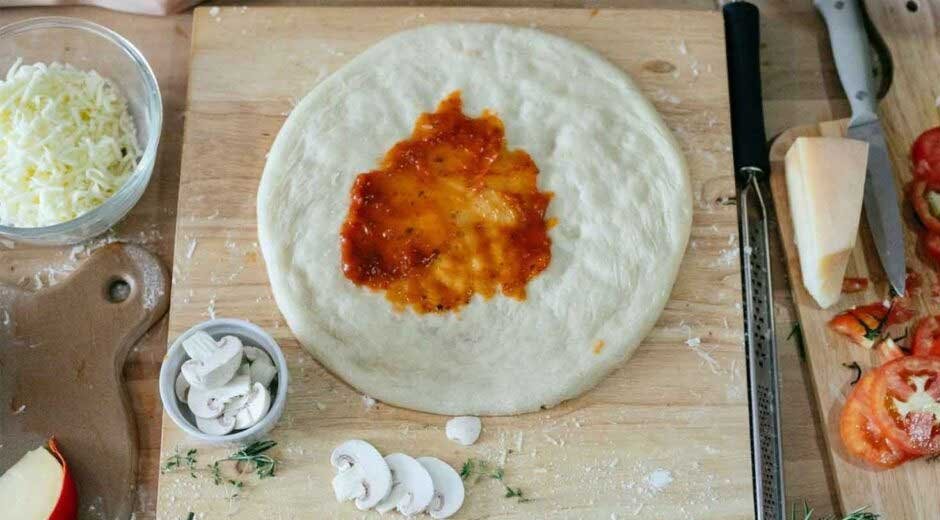Making the perfect pizza base is like setting the stage for a delicious masterpiece. But even the most passionate home cooks and professional chefs can fall into common traps that ruin the foundation of their pizzas.
From the wrong choice of flour to improper kneading techniques, small mistakes can have a big impact. This blog will dive into seven common mistakes to avoid when creating pizza bases.
1. Using the Wrong Type of Flour
The crust of your pizza can be ruined if you choose the wrong type of flour because flour is the foundation of your pizza base. Although bread flour or Tipo 00 flour produces a better texture, all-purpose flour can be used to make pizzas that are less complicated.
Bread flour is ideal for making a crust that is chewy, whereas Tipo 00 flour is ideal for making bases that are thin and crispy. When you use cake or pastry flour, you end up with a base that is crumbly and soft, and it does not hold toppings very well.
Be sure to check the amount of protein, as a dough with a higher protein content will be more robust. Choosing the right flour ensures your pizza base turns out just as you want it, whether it’s thick and soft or thin and crunchy.
2. Neglecting Proper Dough Hydration
The ratio of water to flour is that which is referred to as dough hydration. Not enough water results in a dry and tough base, while an excessive amount of water makes the dough sticky and difficult to work with.
Although the ideal ratio would vary depending on the recipe, the majority of pizza doughs require approximately 60–70% hydration. In order to avoid any issues, make sure to measure your ingredients accurately.
Having the dough properly hydrated allows it to rise properly and produces a crust that is soft and airy. Skipping this step leads to disappointing results, so follow your recipe closely.
3. Skipping the Fermentation Process
The dough’s flavour and texture are both developed through the fermentation process. Although many people rush through the process, allowing your dough to rest for at least eight to twenty-four hours will result in an improvement in its flavour.
By allowing yeast to work, fermentation results in the formation of air pockets and a crust that is chewy. In the event that you skip this step, the base of your pizza will have a tasteless and dense texture. To make a dough that is both delicious and well-risen, patience is essential.
4. Improper Kneading Techniques
It is necessary to knead dough in order to construct gluten, which is responsible for the dough’s elasticity and structure. Dough that has been over kneaded can become too dense, while dough that has been under kneaded will not stretch properly.
You should aim to knead the dough for approximately eight to ten minutes, or until it is smooth and bouncy. It is possible to achieve even gluten development by employing the appropriate technique, such as folding and pushing. Proper kneading results in a crust that’s easy to shape and bake perfectly.
5. Incorrect Use of Yeast
If you want your dough to rise, yeast is the ingredient that you need. It is possible for the dough to over-expand and collapse if you use too much, while using too little will result in the dough being flat and dense.
Instant yeast can be applied directly to the flour, whereas active dry yeast must first be activated in warm water before it can be mixed.
In addition, you should avoid adding yeast to hot water because doing so will kill the yeast. Making use of yeast in the appropriate manner guarantees a dough that has a wonderful texture and flavour.
6. Failing to Rest the Dough
While the dough is resting, the gluten is allowed to relax, which makes it easier to shape. When you skip this step, you will end up with a dough that is tough and springy, and it will shrink back when you roll it out.
After the dough has been kneaded, it should be allowed to rest at room temperature for at least fifteen to thirty minutes. The form and consistency of your pizza will be significantly altered as a result of this brief break. If you want a smooth and workable base, you should not rush through this step.
7. Rolling Dough Too Thin or Too Thick
It is essential to take the time to determine the appropriate thickness for your pizza base. When it is rolled out too thin, the dough may tear, and the toppings may come through unnoticed.
On the other hand, if you roll it out to a thickness that is too great, the crust will be doughy and will not be cooked properly. Aim for an even thickness based on your pizza style—thin for Neapolitan, thicker for deep-dish. The perfect crust can be achieved through practice, which helps you find the right balance.
Start Perfecting Your Pizza-Making Skills Today
By avoiding common mistakes like improper fermentation or using the wrong flour, you can achieve delicious, professional-quality results every time. Start perfecting your pizza-making skills today, and enjoy the satisfaction of creating pizzas that everyone will love. Whether for family meals or special occasions, your efforts in mastering the art of pizza bases will always shine through!









